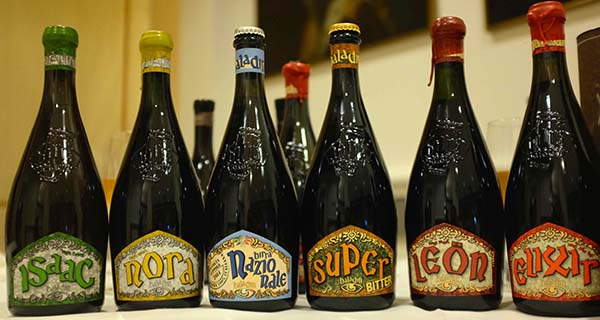
Italian craft beer is popular abroad for two reasons: because it’s appreciated and because small producers find it financially advantageous. To understand the phenomena, one has to take a step back and explain the current state of the internal market for craft beer. A market that has certainly overseen the growth of both the volume of the percentage contribution which amounts to about 4% of the overall production, and the value quota, which is more than 10%, and this because craft beer costs more compared to industrial beer.
MICROBREWERIES ON THE RISE – However, in the last ten years the number of microbreweries has risen steeply. Today, there are more or less 700 to which you must add at least 300 beer companies that produce beer at third-party locations because they lack the necessary machinery. There are about 1000 players in Italy, compared to per capita consumption which is substantially stable (an Italian consumes about 29 litres of beer each year which sets Italy at the bottom of European ranks). Of course, some of these are really very small and focused on a limited distribution area. Others are brewpubs, places where beer is produced and consumed, but the others are competing amongst each other.
USA, THE NEW FRONTIER – There are numerous foreign markets: the U.S. is definitely the main player, with two importers (Shelton Brothers and B. United) sharing the (importation) of the most important brands. However, Italian beers are also appreciated in the Far East, where Japan leads the way.
THE BALADIN BREWERY BUSINESS CASE – The first contacts with importers took place quite a while ago. There’s an anecdote still circulating in the sector about some Japanese buyers who had arrived at the Baladin brewery in Piozzo (Cuneo). Being fascinated with Teo Musso’s beers – one of the founding fathers of the Italian crafts beer movement – the buyers were interested in signing an order which nearly equalled the brewery’s entire production at the time. The negotiations failed when the Japanese declared that the first order was needed more or less to guarantee the presence (of the beers) in their shops. However, in order to satisfy their commercial needs, they would have needed an order straight after of a much higher quantity. A quantity which was too high for Baladin at the time. But things have changed a lot since then, and today, Baladin is the only one of the businesses betting more on exports. “At the end of 2007, our products were only present within 3 or 4 markets,” explains Franco Fallarini, ceo of Selezione Baladin’s, the ‘commercial arm’of the brewery, “Today we are present in 32 different countries. But sheer presence doesn’t mean very much. Foreign markets are still to be developed, and it isn’t a coincidence that we have identified our new export manager in Alvise Lunardi. With him, we are planning a series of activities which are aimed at, on the one hand, increasing our export quota, and on the other hand at working more in some countries we consider to have great potential for Italian beers. Markets such as China, Japan, and South Africa.”


